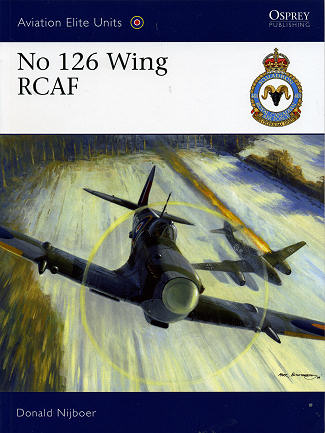 Though slow
to develop a tactical air force like the one Germany had during the first years
of the war, the Allies, particularly the British, realized that one would be
needed to help support the army when it came time to invade the continent. There
was the beginnings in the deserts of North Africa with the Desert Air Force, but
more was needed.
Though slow
to develop a tactical air force like the one Germany had during the first years
of the war, the Allies, particularly the British, realized that one would be
needed to help support the army when it came time to invade the continent. There
was the beginnings in the deserts of North Africa with the Desert Air Force, but
more was needed.
In the times between the conclusion of the North African
campaign and the one in Europe that started with the Normandy invasion, The RAF
worked on developing the type of mobile air force that would be needed in the
battles to come. This included not only the squadrons and wings needed, but all
of the ancillary units needed to support such an undertaking. To say that these
units would be operating in primitive conditions would be something as an
understatement. The men and equipment would be operating from forward fields
without permanent maintenance or living facilities. This meant open air repair
work, living in tents and operating from fields where the runway would be either
bare grass or pierced steel planking (PSP).
The various wings would be mostly involved in ground attack
missions as well as air superiority missions. The most successful of these wings
was 126 Wing RCAF. Operating Spitfire IX and later Sptifire XIV aircraft, they
proved to be quite adept at helping to protect the ground forces from aerial
attack as well as assisting in carrying the attach to the Germans on the ground.
Though not developed as a fighter bomber, the Spitfire proved itself as a
very capable aircraft in this regime. Probably its main limiting factor was it
lifting ability. It could carry a good load, but only at the expense of fuel.
However, it was adaptable and much beloved by its pilots and its ground crews.
In this latest edition of the Aviation Elite Units series,
author Donald Nijboer covers as development and operations of this superb
unit. There are sections taken from the official unit records as well as pilot
and crew recollections. When one adds the excellent choice of period photos and
the fine collection of full color profiles, you have a book that is both an
interesting read and an excellent reference.
It is one that I enjoyed reading and I know you will as well.
Highly recommended.
April 2010
For more on the complete line of Osprey books,
visit www.ospreypublishing.com. In the US, it is
Osprey Direct at 44-02 23rd St, Suite 219, Long Island City, NY 11101., where you can
get a catalogue of available books.
If you would like your product reviewed fairly and quickly, please contact
me or see other details in the Note to
Contributors.
 Though slow
to develop a tactical air force like the one Germany had during the first years
of the war, the Allies, particularly the British, realized that one would be
needed to help support the army when it came time to invade the continent. There
was the beginnings in the deserts of North Africa with the Desert Air Force, but
more was needed.
Though slow
to develop a tactical air force like the one Germany had during the first years
of the war, the Allies, particularly the British, realized that one would be
needed to help support the army when it came time to invade the continent. There
was the beginnings in the deserts of North Africa with the Desert Air Force, but
more was needed.